Supermarine S.5
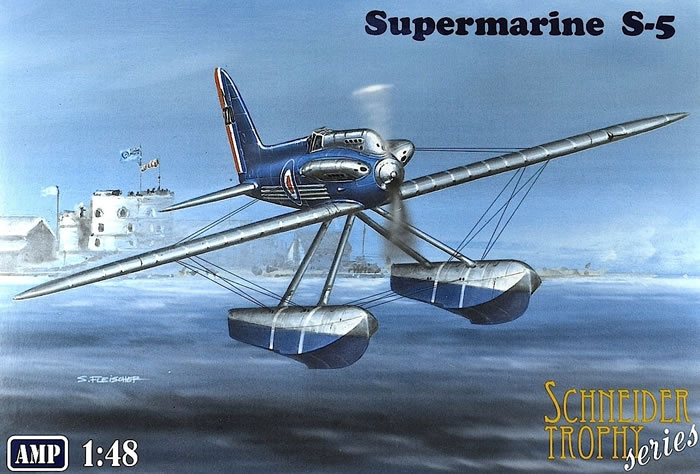
AMP, 1/48 scale
S
u m m a r y : |
Description and Item No.: |
AMP Kit No. 48009 - Supermarine S.5 |
Contents and Media: |
74 parts in grey styrene, one clear part, one PE fret, and one decal sheet with markings for two airframes. |
Price: |
$45.81 Plus Shipping at HobbyLinkJapan |
Scale: |
1/48 |
Review Type: |
First Look |
Advantages: |
New mold kit of a well known historically significant, but under-kitted airplane. |
Disadvantages: |
Being a limited production kit a lot of clean up, re-surfacing, and re-scribing will be required. Mounting holes in the floats have to be measured out and drilled. |
Recommendation: |
This kit certainly isn’t a “shake ‘n bake.” A lot of time will be spent removing flash and freshening up surface details. I suspect there will also be a fair amount of trial and error involved in fitting the main parts as well as the PE rigging. That said AMP should be congratulated for kitting such a beautiful airplane that’s been long underserved by the modeling industry. Once built, this will be an eye-catching model seldom seen at the model shows. |
Reviewed by John Miller

Airfix's 1/72 scale Sea King is available online from Squadron.com
The Supermarine S.5 was a 1920’s British single-engined single-seat racing seaplane built by Supermarine.
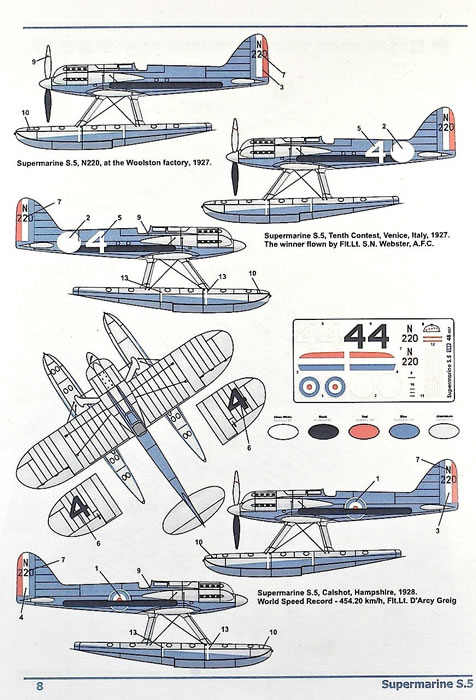
Designed specifically for the Schneider Trophy competition, the S.5 was the progenitor of a line of racing aircraft that ultimately led to the Supermarine Spitfire.
General Characteristics
-
Crew: 1
-
Length: 24 ft 3½ in (7.32 m)
-
Wingspan: 26 ft 9 in (8.15 m)
-
Height: 11 ft 1 in (3.38 m)
-
Wing area: 115 ft² (10.7 m²)
-
Empty weight: 2,680 lb (1,215 kg)
-
Loaded weight: 3,242 lb (1,470 kg)
-
Powerplant: 1 × Napier Lion VIIA water cooled broad arrow, 900 hp (671 kW)
Performance
- Maximum speed: 319.57 mph (514.3 km/h)
(Edited from Wikipedia)
Okay, let’s start out with the fact that this is a limited-run kit best tackled by builders with some experience. There’s a fair amount of flash to deal with so clean up will be a big part of this build. The sprue gates are thick and some surface details will have to be freshened up with a scriber and micro-files prior to paint.
Layout and engineering are both conventional. Assembly starts with the Napier Lion engine. The engine, with its 3 banks of 4 cylinders each, is nicely detailed and would serve as a good starting point for super-detailing. The cowl is composed of 4 parts so with some scratch building an open-cowl option could be built.
Next up is the cockpit and the detail provided is a bit lacking for this scale especially for an open cockpit airplane where all the detail (or lack thereof) will be clearly seen. Conspicuously missing is the throttle quadrant as well as any cockpit side panel detail at all. Some time spent digging through the spares box and jazzing up the pilots’ office would be time well spent.
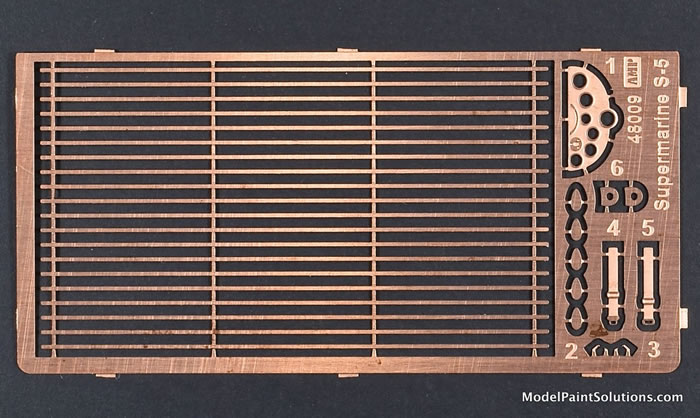
With the cockpit and engine trapped between the fuselage halves and the 4-piece cowl in place the builder is directed to assemble the wing from a full-span lower piece and half-span, left and right upper halves. As with most of the kit the surface details on the wing are somewhat soft and in need of freshening up.
The floats, each comprised of left and right halves, are next in sequence.

Here the builder will have to measure and drill holes for the strut attach points as there’s none provided. A diagram with measurements in millimeters is provided as a guide. I see some issues here and would suggest combining the drilling of these holes with a lot of test fitting. The four streamlined tie rods that form an X in between the floats are provided as PE parts: nice.
Finishing up the airframe are the rudder and elevators, which are all single parts allowing these flight surfaces to be posed.
The windscreen is a bit rough.
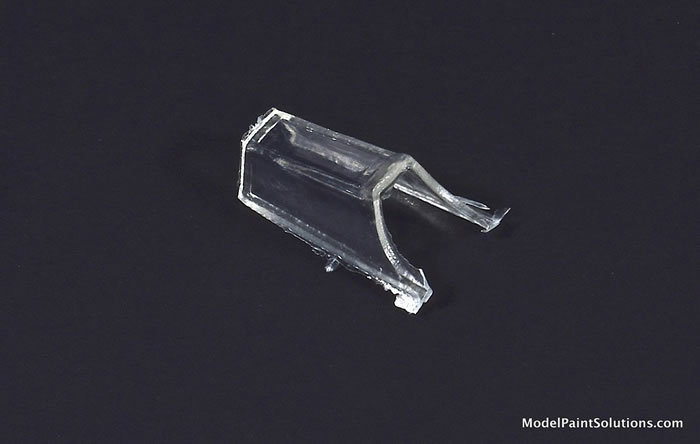
In addition to being thick with a fair amount of flash, the plastic will require some polishing for better clarity.
Markings:
The two schemes covered by the decals both have blue fuselages with wings in silver dope. The decals, by AMP, have adequate registration and color density.
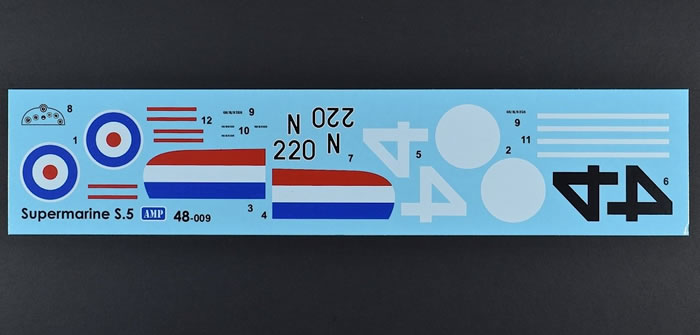
Markings for 2 schemes are provided as follows:
-
Supermarine S.5 Winner of the Tenth Contest, Venice, Italy, 1927. Flown by Flt. Lt. S. N. Webster, A.F.C.
-
Supermarine S.5, Calshot, Hampshire, 1928. Word record setter: 282.23 mph. Flown by Flt. Lt. D’Arcy Greig.
This kit certainly isn’t a “shake ‘n bake.” A lot of time will be spent removing flash and freshening up surface details. I suspect there will also be a fair amount of trial and error involved in fitting the main parts as well as the PE rigging. That said AMP should be congratulated for kitting such a beautiful airplane that’s been long underserved by the modeling industry. Once built, this will be an eye-catching model seldom seen at the model shows. Recommended.
Now go paint something!
For more on this review visit Modelpaintsolutions.com
Kit purchased by reviewer, again.
Review Text and Images Copyright © 2020 by John Miller
Page Created 10 April, 2020
Last updated
11 April, 2020
Back to HyperScale Main Page
Back to Reviews Page

|
Home
| What's New |
Features |
Gallery |
Reviews |
Reference |
Forum |
Search